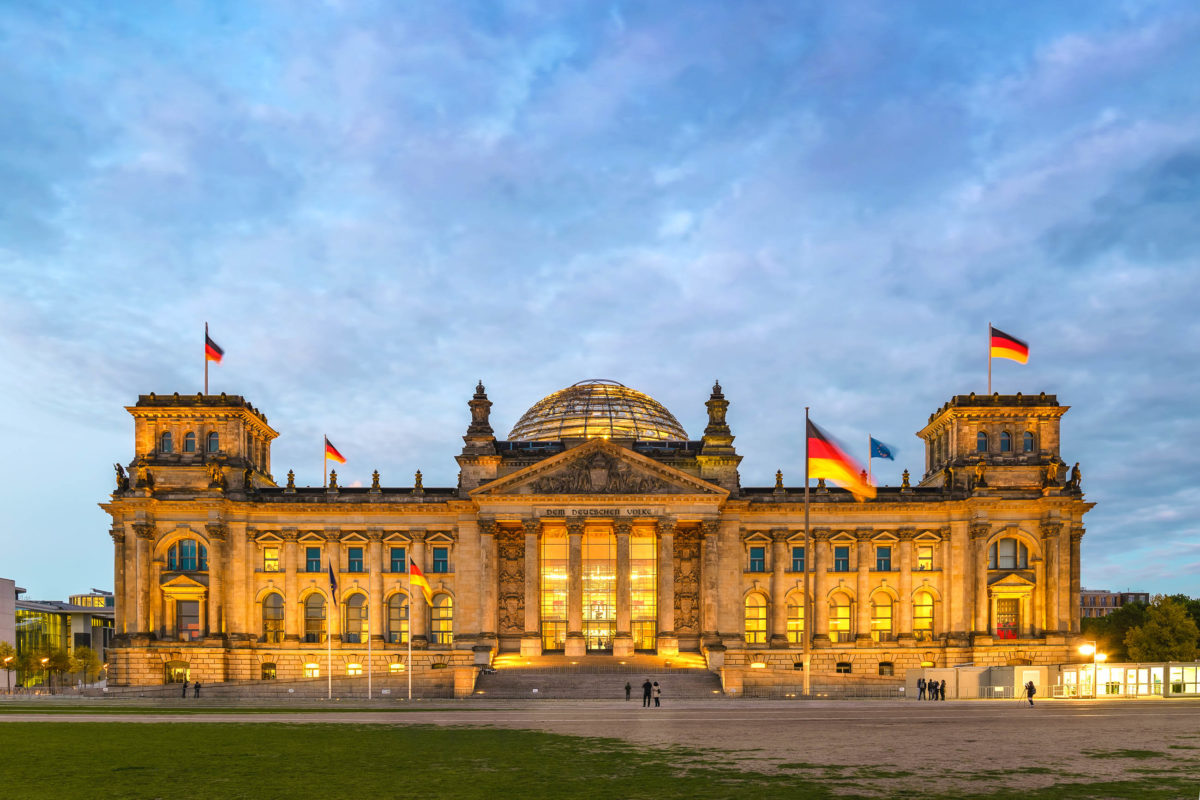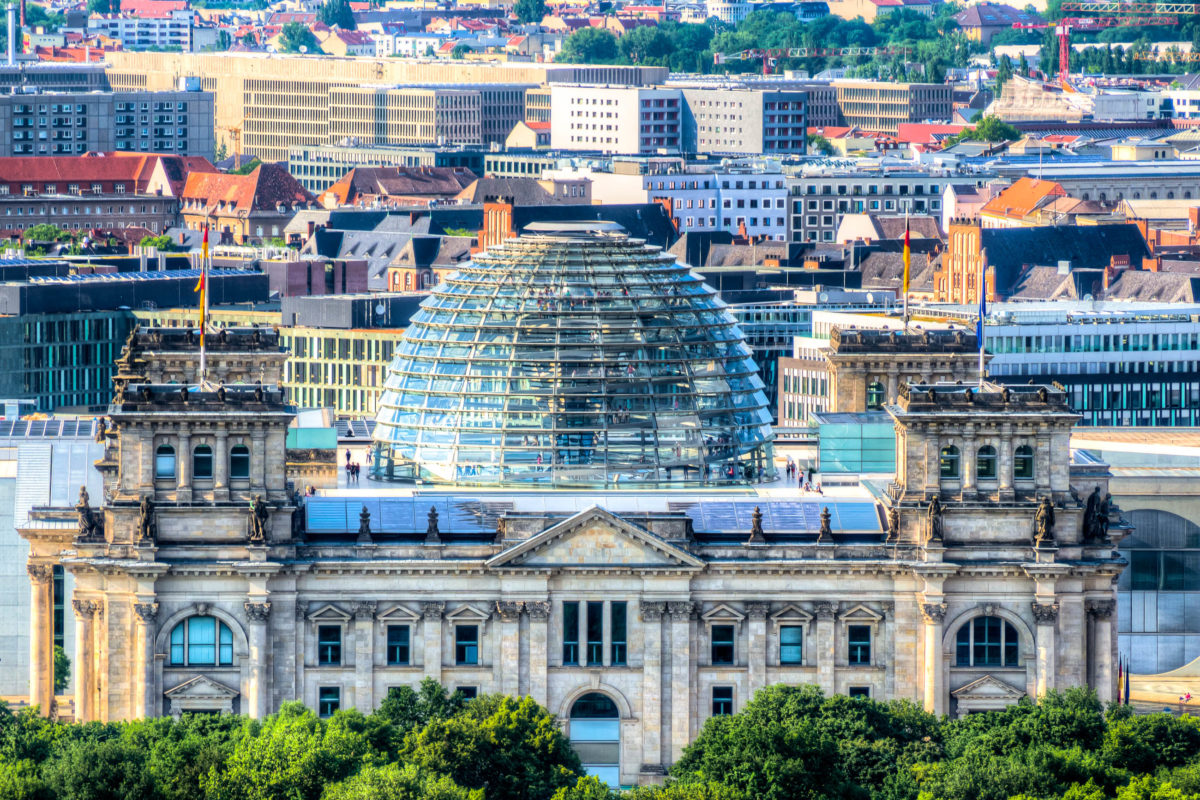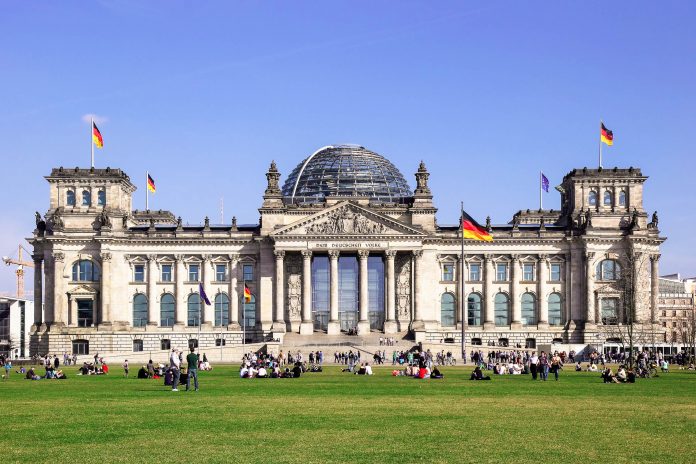In kaum einem Gebäude wurden in der Vergangenheit so viele wichtige politische Entscheidungen getroffen wie im Berliner Reichstag. Die historisch wertvolle Stätte bietet heute einen grandiosen Blick über die deutsche Hauptstadt.
Das spektakuläre Reichstagsgebäude gehört zu unseren Top 10 Sehenswürdigkeiten von Berlin und Deutschland. In der Nähe des Brandenburger Tores gelegen ist es seit 1990 wieder der Sitz des Deutschen Bundestages.
Inhaltsverzeichnis
BILDER: Reichstag in Berlin
Fotogalerie: Reichstag in Berlin
Entstehung des Berliner Reichstags

Erbaut wurde der Reichstag am Ende des 19. Jahrhunderts nach den Plänen des deutschen Architekten Paul Wallot. Anlass dafür war die Ernennung Berlins zur Reichshauptstadt im Jahr 1871, was die Notwendigkeit eines Regierungssitzes für das neu entstandene Parlament zur Folge hatte. Wallot vereinigte in dem Bauwerk Elemente aus der Renaissance, dem Barock und dem Klassizismus.
Der damals herrschende Kaiser Wilhelm II war über das Projekt allerdings überhaupt nicht erfreut, da er sich nicht wirklich für den Bau einer Volksvertretung begeistern konnte. So ist es auch nicht verwunderlich, dass er veranlasste, die Kuppel auf dem Gebäude kleiner als geplant zu bemessen, damit ihre Ausmaße jene der Kuppel des Berliner Schlosses nicht übertrafen.
Auch die Giebelinschrift „Dem Deutschen Volke“, welche noch heute das Reichstagsgebäude ziert, wurde erst 1916 hinzugefügt, da sie der Kaiser damals als zu demokratisch empfand.
Historischer Schauplatz

Das Reichstagsgebäude war im Laufe der Zeit immer wieder Schauplatz wichtiger historischer Ereignisse. So rief der SPD-Politiker Philipp Scheidemann am 9. November 1918 vom Balkon des Bauwerks die Republik aus, am 30.04.1945 hissten Rotarmisten die rote Fahne der Sowjetunion und symbolisierten so das Ende des Zweiten Weltkrieges.
Wie so viele andere Gebäude überstand auch das Reichstagsgebäude die Dreißiger- und Vierzigerjahre nicht unbeschädigt. 1933 brannten der Plenarsaal, in welchem die allererste Sitzung der Bundesregierung stattgefunden hatte, und die Kuppel vollständig aus. Während des Krieges wurde das gesamte Gebäude schwer beschädigt und erst Ende der 50er Jahre restauriert.
Umbau des Reichstags

Im Jahr 1990, kurz nach der Wende, wurde der Reichstag Schauplatz der Feierlichkeiten zur Wiedervereinigung. Wenige Jahre später begann eine zweite Umbauphase nach den Entwürfen des britischen Architekten Sir Norman Foster, welche mit der ersten Sitzung des Bundestages im Jahr 1999 endete.
Die auffälligste Neuerung ist die gigantische gläserne Kuppel, die heute eine beliebte Attraktion für Touristen aus aller Welt ist. In ihrem Inneren winden sich zwei Treppen empor, die die Besucher zur Aussichtsplattform und zur Dachterrasse führen. Dort kann man im Restaurant oder Café mit wunderbarem Ausblick über ganz Berlin entspannen; es zahlt sich allerdings aus, im Vorhinein einen Platz zu reservieren.
Besuch des Berliner Reichstags

Das Bauwerk mitsamt der gläsernen Kuppel kann jederzeit besichtigt werden, eine Anmeldung dafür ist allerdings erforderlich. Aussichtsplattform, Restaurant und Café sind öffentlich zugänglich. Immer wieder finden im Reichstagsgebäude Ausstellungen statt.
Vor dem Reichstag wurde eine weitläufige Grünfläche angelegt, die Berlinern sowie Touristen zum Ausruhen, Picknicken, Fußball spielen oder Musik machen dient.
Tipp: Halten Sie vor dem Reichstagsgebäude nach einem historisch bedeutenden Bäumchen Ausschau. Die so genannten „Friedenslinde“ erinnert an den Fall der Mauer und die Vereinigung Deutschlands im Jahr 1989.
Weiterführende Links:
Besuch beim Deutschen Bundestag
Offizielle Website des Restaurants am Dachgarten des Bundestags





